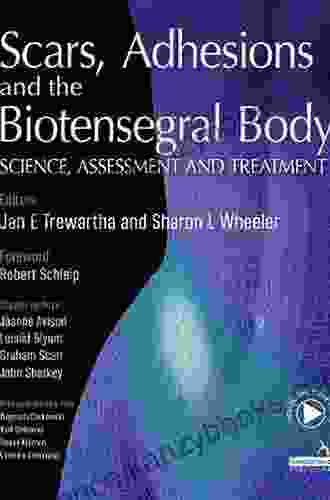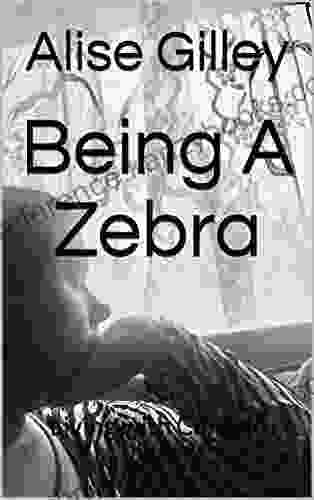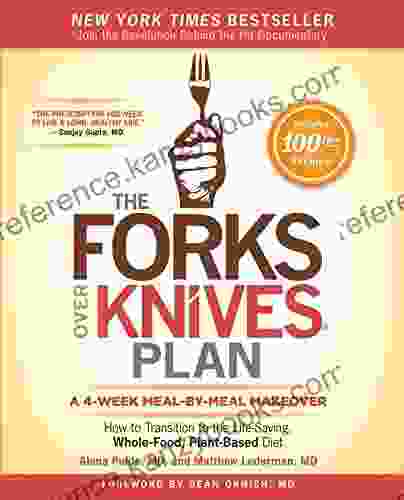Scars, Adhesions, and the Biotensegral Body: A Comprehensive Guide to Understanding and Healing Connective Tissue Injuries

Scars are a natural part of the healing process. However, when scars become thick, tight, or painful, they can lead to a variety of problems, including pain, stiffness, and restricted range of motion. Adhesions are bands of scar tissue that can form between tissues and organs, causing similar problems.
Scars and adhesions can be caused by a variety of factors, including surgery, trauma, and chronic inflammation. They can affect any part of the body, but they are most common in the back, neck, shoulders, and knees.
5 out of 5
| Language | : | English |
| File size | : | 51307 KB |
| Text-to-Speech | : | Enabled |
| Screen Reader | : | Supported |
| Enhanced typesetting | : | Enabled |
| Print length | : | 182 pages |
Traditional treatments for scars and adhesions often involve cutting or stretching the scar tissue. However, these treatments can be painful and ineffective, and they can often lead to further scarring.
The biotensegral model is a new way of understanding the human body as a dynamic, self-organizing system. This model suggests that scars and adhesions are not simply defects that need to be removed, but rather are part of the body's natural healing process.
The biotensegral model has led to the development of new techniques for releasing scars and adhesions. These techniques are gentle and non-invasive, and they can be used to restore balance and function to the body.
The Biotensegral Model
The biotensegral model is a new way of understanding the human body as a dynamic, self-organizing system. This model was developed by Dr. Stephen Levin, a biophysicist and osteopathic physician.
The biotensegral model suggests that the body is not a static structure, but rather a dynamic system that is constantly changing and adapting to its environment. The body is made up of a network of interconnected tissues, including bones, muscles, tendons, ligaments, and fascia.
These tissues are arranged in a tensegrity structure, which is a structure that is able to maintain its shape without the need for rigid components. Tensegrity structures are found throughout the natural world, from the human body to the Eiffel Tower.
In the biotensegral model, the body's tissues are held in place by a network of tensional forces. These forces are generated by the muscles, tendons, ligaments, and fascia. The tensional forces create a continuous web of tension that supports the body and allows it to move and function.
When the body is injured, the tensional forces can be disrupted. This can lead to the formation of scars and adhesions, which can restrict movement and cause pain.
Scars and Adhesions
Scars are a natural part of the healing process. When the body is injured, the damaged tissue is repaired by a process called fibrosis. Fibrosis involves the formation of new collagen fibers, which are the main protein component of scar tissue.
In most cases, scars are thin and flexible, and they do not cause any problems. However, sometimes scars can become thick and tight, or they can form in areas where they restrict movement. These types of scars can be painful and can lead to a variety of problems, including:
- Pain
- Stiffness
- Reduced range of motion
- Muscle weakness
- Numbness and tingling
- Headaches
- Chronic fatigue
Adhesions are bands of scar tissue that can form between tissues and organs. Adhesions can be caused by a variety of factors, including surgery, trauma, and chronic inflammation.
Adhesions can cause a variety of problems, including:
- Pain
- Stiffness
- Reduced range of motion
- Organ dysfunction
- Infertility
Treatment of Scars and Adhesions
The traditional treatment of scars and adhesions often involves cutting or stretching the scar tissue. However, these treatments can be painful and ineffective, and they can often lead to further scarring.
The biotensegral model has led to the development of new techniques for releasing scars and adhesions. These techniques are gentle and non-invasive, and they can be used to restore balance and function to the body.
Some of the most common biotensegral techniques for releasing scars and adhesions include:
- Myofascial release
- Fascial manipulation
- Strain-counterstrain
- Somatic experiencing
These techniques can be used to release scars and adhesions, restore balance to the body, and improve overall health and well-being.
Scars and adhesions are a common problem that can affect anyone. However, these conditions do not need to be a life sentence of pain and disability.
T
5 out of 5
| Language | : | English |
| File size | : | 51307 KB |
| Text-to-Speech | : | Enabled |
| Screen Reader | : | Supported |
| Enhanced typesetting | : | Enabled |
| Print length | : | 182 pages |
Do you want to contribute by writing guest posts on this blog?
Please contact us and send us a resume of previous articles that you have written.
 Book
Book Novel
Novel Page
Page Chapter
Chapter Text
Text Story
Story Genre
Genre Reader
Reader Library
Library Paperback
Paperback E-book
E-book Magazine
Magazine Newspaper
Newspaper Paragraph
Paragraph Sentence
Sentence Bookmark
Bookmark Shelf
Shelf Glossary
Glossary Bibliography
Bibliography Foreword
Foreword Preface
Preface Synopsis
Synopsis Annotation
Annotation Footnote
Footnote Manuscript
Manuscript Scroll
Scroll Codex
Codex Tome
Tome Bestseller
Bestseller Classics
Classics Library card
Library card Narrative
Narrative Biography
Biography Autobiography
Autobiography Memoir
Memoir Reference
Reference Encyclopedia
Encyclopedia Alexander Orwin
Alexander Orwin Amanda Jenkins
Amanda Jenkins Alexis Chesney
Alexis Chesney Evelyn Underhill
Evelyn Underhill Maureen Hancock
Maureen Hancock Amaliya Books
Amaliya Books Ali English
Ali English Alex G Paman
Alex G Paman Amanda Freitag
Amanda Freitag Alex Bromley
Alex Bromley Alex Snodgrass
Alex Snodgrass Amanda Rettke
Amanda Rettke Alexander Great
Alexander Great Samuel Kounev
Samuel Kounev Marsha Means
Marsha Means Alex Aniel
Alex Aniel Kate Gilbert
Kate Gilbert Alm Books
Alm Books Alena Hennessy
Alena Hennessy Mark Reutlinger
Mark Reutlinger
Light bulbAdvertise smarter! Our strategic ad space ensures maximum exposure. Reserve your spot today!
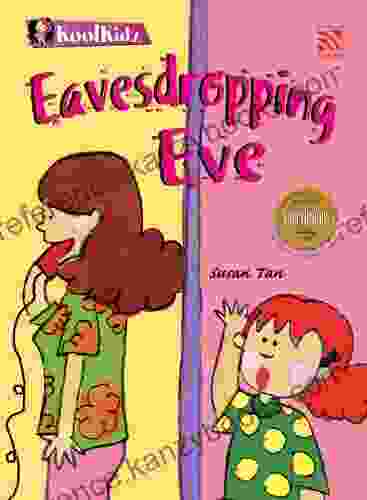
 Amir SimmonsUnveiling the Secrets of Eve: A Comprehensive Exploration of Alma Flor Ada's...
Amir SimmonsUnveiling the Secrets of Eve: A Comprehensive Exploration of Alma Flor Ada's...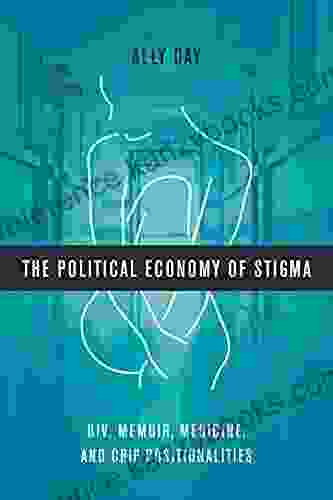
 Orson Scott CardThe Political Economy of Stigma: A Critical Analysis of the Social and...
Orson Scott CardThe Political Economy of Stigma: A Critical Analysis of the Social and... Jason HayesFollow ·16.6k
Jason HayesFollow ·16.6k Kevin TurnerFollow ·4.8k
Kevin TurnerFollow ·4.8k Javier BellFollow ·19.1k
Javier BellFollow ·19.1k Ricky BellFollow ·12.7k
Ricky BellFollow ·12.7k Juan RulfoFollow ·7.4k
Juan RulfoFollow ·7.4k Henry HayesFollow ·12.9k
Henry HayesFollow ·12.9k Kazuo IshiguroFollow ·2.2k
Kazuo IshiguroFollow ·2.2k Forrest BlairFollow ·14.8k
Forrest BlairFollow ·14.8k
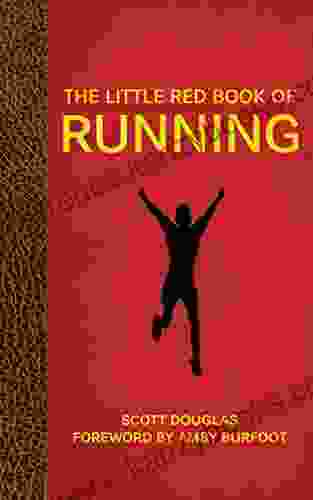
 Alfred Ross
Alfred RossThe Little Red Book of Running: A Comprehensive Guide to...
Running is one...

 Fabian Mitchell
Fabian MitchellThe Ultimate Step-by-Step Cookbook with 101 Quick and...
Are you looking for a...

 Eric Nelson
Eric Nelson101 Recipes From Azerbaijan And Around The World: A...
Embark on a...
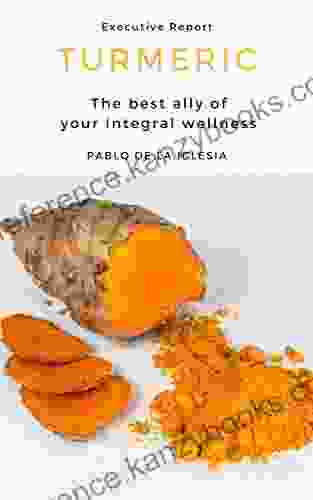
 Troy Simmons
Troy SimmonsTurmeric: The Best Ally of Your Integral Wellness
Embark on a journey...
5 out of 5
| Language | : | English |
| File size | : | 51307 KB |
| Text-to-Speech | : | Enabled |
| Screen Reader | : | Supported |
| Enhanced typesetting | : | Enabled |
| Print length | : | 182 pages |


